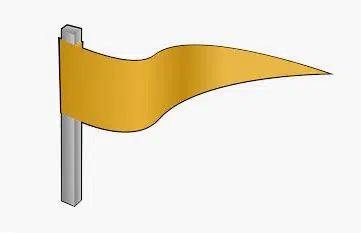 A banner is a banner or flag that, in ancient times, was used to distinguish military bodies, brotherhoods and other groups . The banners, therefore, are insignia or badges .
A banner is a banner or flag that, in ancient times, was used to distinguish military bodies, brotherhoods and other groups . The banners, therefore, are insignia or badges .
The first banners were born as individual symbols. From the 10th century until approximately the 13th century , it was common for knights to place a banner on their lance to show their presence on the battlefield.
Monarchs, lords and towns, over time, also began to use banners to distinguish themselves. This is how the royal banner arose, carried by the ensign who was next to the king .
Then the sovereigns began to grant banners to the municipalities . The king selected a knight to carry it and assigned him the responsibility of displaying and defending it. If in a war the banner remained in the hands of the enemy, attempts were made to rescue it as soon as possible.
In Spain , several popular festivals were born from the recovery of a banner that had been lost in a confrontation. Currently there are banners that continue to be used to represent localities in festivities, such as the so-called León banners or, simply, León banners.
The León banners are preserved in the old León Region, a historical region that was defined in this way in 1833 and includes three provinces : Zamora, Salamanca and León. Its function is to represent the localities in different pilgrimages and festivals, whether civil or religious in nature.
There are several elements that we can distinguish in a Leonese banner:
* mast or rod : it is a piece made of wood that can measure a minimum of 3 and a maximum of 14 meters. It is the part of the banner to which the fabric is attached. At its base we can notice a series of hooks that serve to attach the banner to the belt of the person in charge of carrying it. The mast has six to ten very thin channels that are made to reduce mass and make it less heavy;
* cloth or fabric : it is generally made up of horizontal bands of damask fabric that are aligned in a horizontal direction. The most frequently used colors are white, blue, red and green. The bands are joined by sewing, using imitation gold thread. Its termination exhibits two points , one lower and one upper, due to the notch;
 * cross : made of silver or gold bronze or brass. Its size is small and it is placed at the top of the mast. It should be noted that not all banners have a cross, but some have an ornament with a floral motif;
* cross : made of silver or gold bronze or brass. Its size is small and it is placed at the top of the mast. It should be noted that not all banners have a cross, but some have an ornament with a floral motif;
* capelin : a piece of cloth that is placed at the top of the mast, above the union of the cloth, the cross and the oars. Its characteristics must be the same as those of the cloth;
* oars : they are cords that are made of cotton, with a color similar to that of the fabric, and are tied to the highest part of the pole to hold the whole when the wind is very strong. The oars are not carried by the pendonero (who carries the banner), but by other people.
In the field of religion , the banner is a badge used in processions . Known as simpecados in certain cases, these banners are hung on a pole and lead the march.
Finally, the Royal Spanish Academy ( RAE ) recognizes some uses of banner in colloquial language . A bannerman, in this framework, can be a person who is libertine in terms of his sexuality or has disordered habits . The expression earless banner can also be used to refer to a woman who behaves in an impudent or shameless manner.
